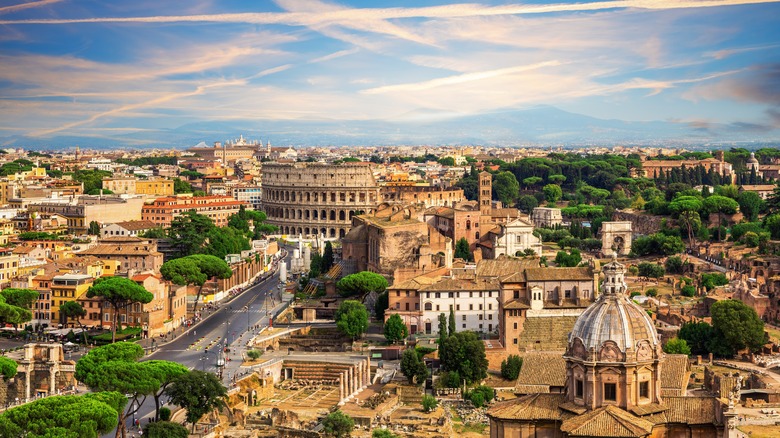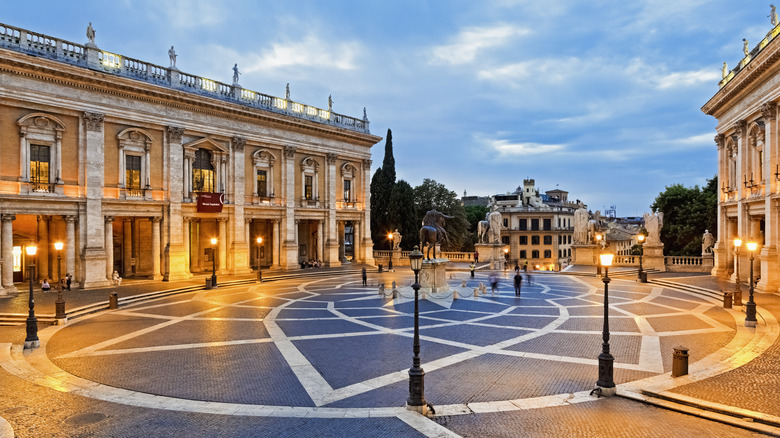Next To Rome's Colosseum Sits What's Believed To Be The World's Oldest Museum
All roads lead to Rome. That's how the old saying goes, and with around 35 million tourists visiting the Eternal City in 2023, it certainly rings true. If Rome is on your bucket list, you're likely planning on the usual suspects in terms of attractions. Maybe you're taking in the Trevi Fountain and the Forum, or perhaps you're visiting the awe-inspiring, uncrowded Appian Way and the spectacular Colosseum (though Rick Steves warns against visiting on the one day a month when entrance is free).
One spot you may not have considered is the Capitoline Museum, just steps away from the site of ancient gladiatorial battles. The Musei Capitolini, as it's called in Italian, is said to be the oldest museum in the world. It also houses some famous art, including the "Capitoline Wolf" and a statue of "Romulus and Remus" — who legend says are the founders of Rome — suckling from a wolf.
The Capitoline Museum began as an art collection in 1471 when Pope Sixtus IV donated several bronze statues (including the "Capitoline Wolf") to the Roman populace so that they could be displayed on the Capitoline Hill. However, it wasn't until 1734 that it opened to the public. Remarkably, the current square and buildings that house the collection today were redesigned by the famous Michelangelo (the artist, not the Ninja Turtle, in case you were wondering).
All about visiting the Capitoline Museum
Even if you only have one day in Rome, the Capitoline Museum is worth a visit. Just a walk through the beautiful square in the front shows you a replica of the famous statue of Marcus Aurelius, who ruled Rome from A.D. 161 to A.D. 180, on horseback (the original is inside the museum for conservation purposes). You'll also find the statue of "The Dying Gaul", a warrior bleeding from his battle wounds, which is a copy of the lost Greek original. Gianlorenzo Bernini's bust of Medusa with her sorrowful eyes is also there, as is the famous "Statue of Artemis of Ephesus", a copy of the second-century B.C. original.
Inside the Hall of Emperors, you'll see busts and statues of Roman rulers, along with depictions of the famous minds of the Empire in the Hall of Philosophers, like Socrates, Cicero, and Pythagoras. On the painting side, you'll see 1622's "The Sybil", done by Domenichino in oil, and the 1596 "Finding of the She-wolf" by Cavalier d'Arpino. There are coins, cameos, jewelry, funerary monuments and alters, as well as statues of several popes and the colossal statues of Constantine's head and hand.
The Capitoline Museum has a number of accommodations to make it accessible, including lifts, platforms, tactile supports for the visually impaired, and a video in Italian Sign Language (LIS) describing the route in the museum. Other than a few holidays, the Capitoline Museum is open every day from 9:30 a.m. to 7:30 p.m., with shorter hours on Christmas Eve and New Year's Eve. Entry costs around $14, with lower prices for residents of Rome and the surrounding metropolitan area.

